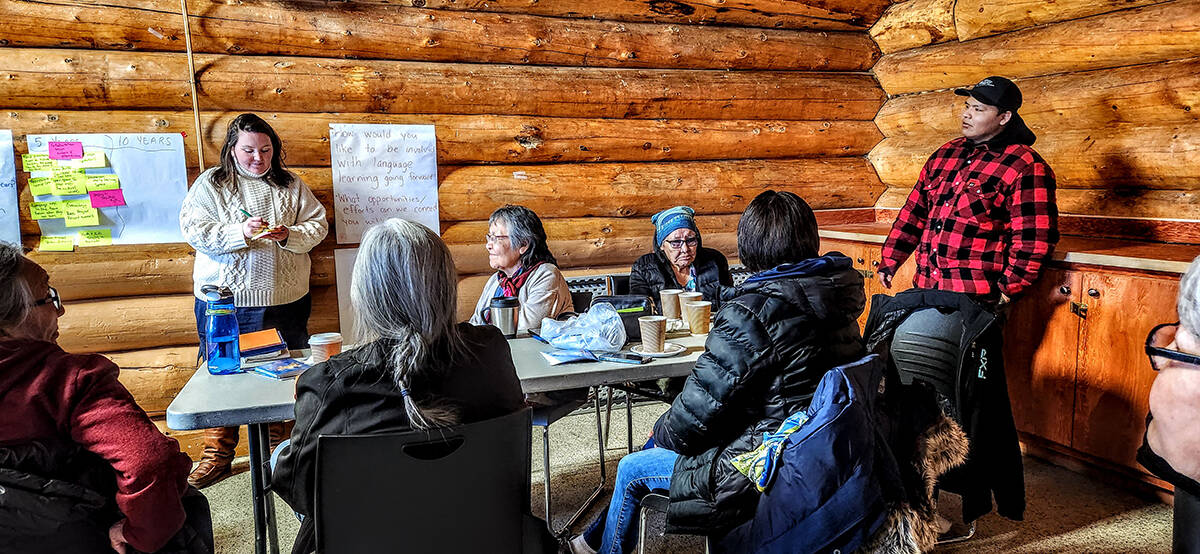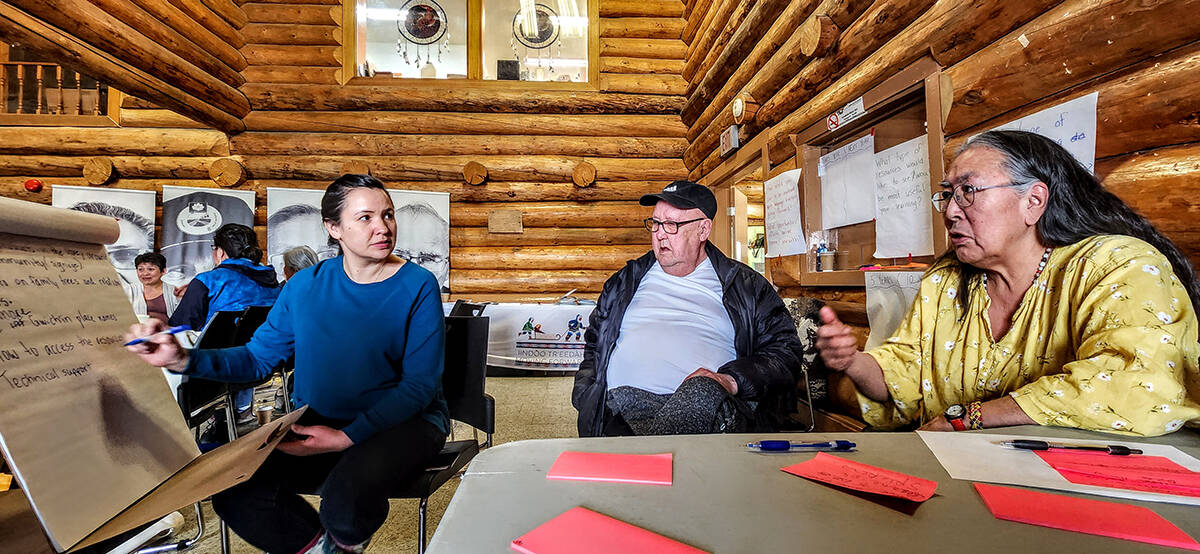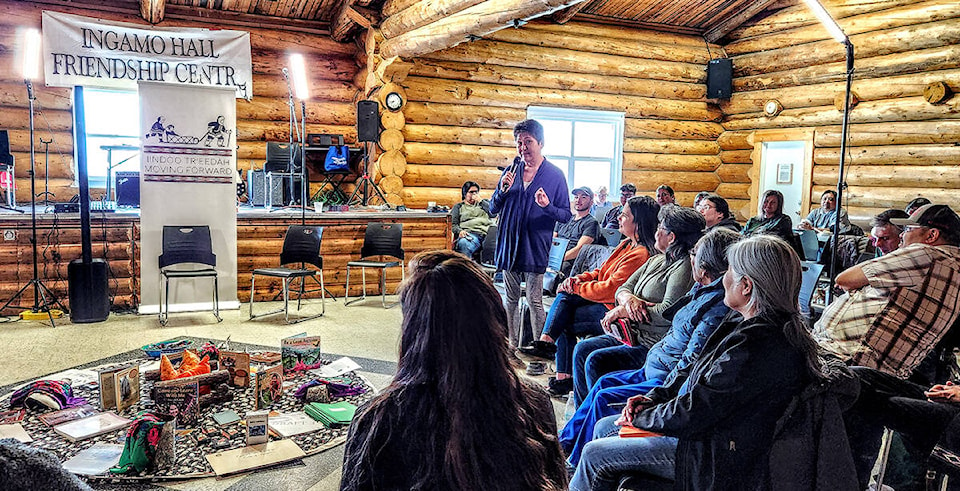By Karli Zschögner
Special to Inuvik Drum
Inuvik’s beautiful log Ingamo Hall was the centre of three days of deep discussion and strategizing plans for Dinjii Zhuh-Gwich’in language learning and mentorship from April 4 to 6.
“I’m so grateful to have this opportunity to come here,” said Ashley Ens, originally from Inuvik, currently residing in Lethbridge, AB.
Over 60 registered and attended the Indòo Tr’eedàh-Moving Forwards Gwich’in Language Gathering from other regions and provinces including Ontario. The gathering was hosted by the Gwich’in Tribal Council.
“Networking has been great, the online resources that they were telling us about [are] amazing,” she Ens, who is working on her Ph.D. on Lethbridge decolonizing post-secondary education. “I really learn by seeing and doing and just the fact that everything is online, and they have the audio component, I think it’s really going to help me as I progress to learn my language.”
With lineups out the door, Tuesday evening they hosted a public feast followed by fiddling and performances from the Teetl’it Gwich’in Dancers and Inuvik Inuvilauit drum dancers.

The gathering’s discussions evoked emotions connected to the historical legacy of the residential schools and punishment under that system for speaking their language.
The negative side of the discussion was balanced with presentations and discussions encouraging youthful fun and laughter as having an integral role in helping learn a language, explained by Aklavik Moose Kerr School Gwich’in language teacher Anna-Lee McLeod, who presented examples of interactive online and tactile lessons, games, and songs.
Andrew Cienski also presented on the work he facilitated under the GTC since 2018 as a language revitalization specialist. This included the Gwich’in language website, full of online audio, visual lessons and interactive online storybooks in Teetl’it, Gwichyah, and Vuntut-Old Crow dialects.
“When elders talk about the importance of culture in language, that’s a very profound and real truth,” he said on the importance of experiential and on-the-land learning. “It’s not something that just sounds nice to say.”
Working with local elders like Teetl’it Zheh-Fort McPherson’s Mary-Effie Snowshoe, he said they have developed two beginner-level textbooks and a series of seven storybooks for different levels. One book is Peter ts’àt Indeedzit Ts’ik with artwork by Miles Debastien, an original story from Dawson City youth Peter Greenland.
From working with Gwich’in and other Indigenous languages, he’s learned the importance of getting away from the Western-academic textbook focus in language learning; rather ensuring the learning is using all senses. This includes getting out on the land with a fluent speaker, touching bark, gutting a fish and repeating the language to these actions.
“If you could actually touch a piece of bark or a piece of sandpaper when you’re learning the word rough, you will remember it better than if you just see the word rough written on a page,” he said.
He said there are three more storybooks yet to be published as they wait on artwork.
The gathering was organized by GTC’s manager of early learning and language Michelle Wright and emceed by language consultant and former Aklavik principal Velma Illasiak.
Teetlit Zheh-Fort McPherson’s Robert Koe was one of the few young people at the gathering. He shared as an example in Thursday’s community brainstorming session how, through years of consistent repetition over the schools’ intercom and radio, he was able to learn and memorize a prayer in Gwich’in.

